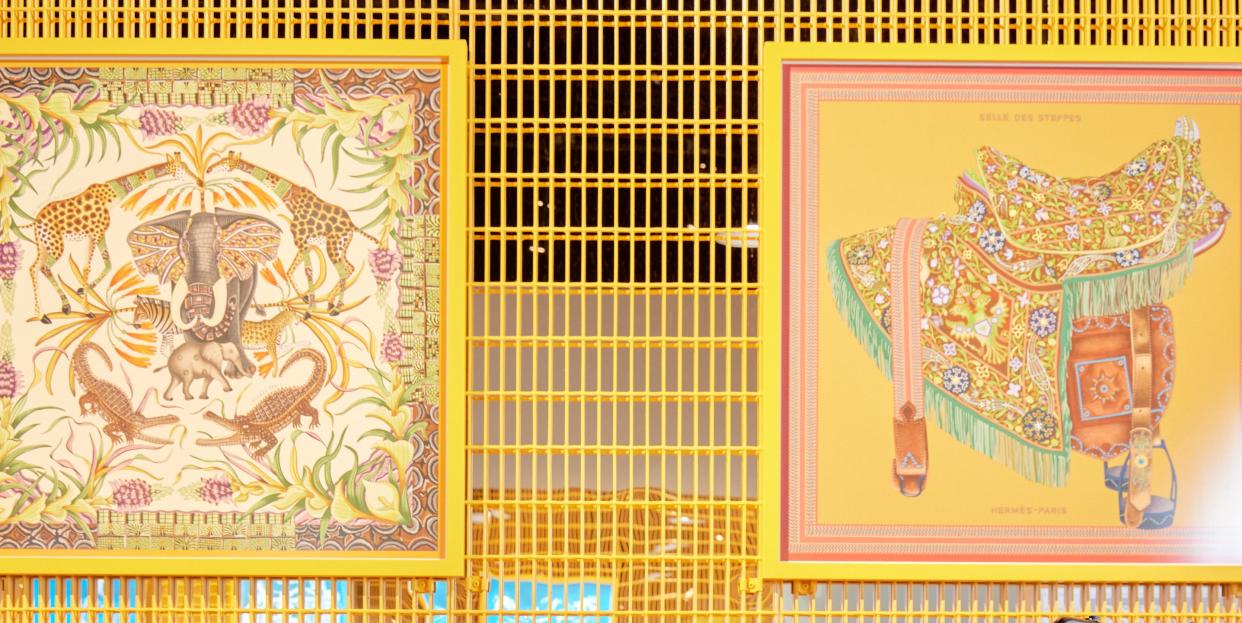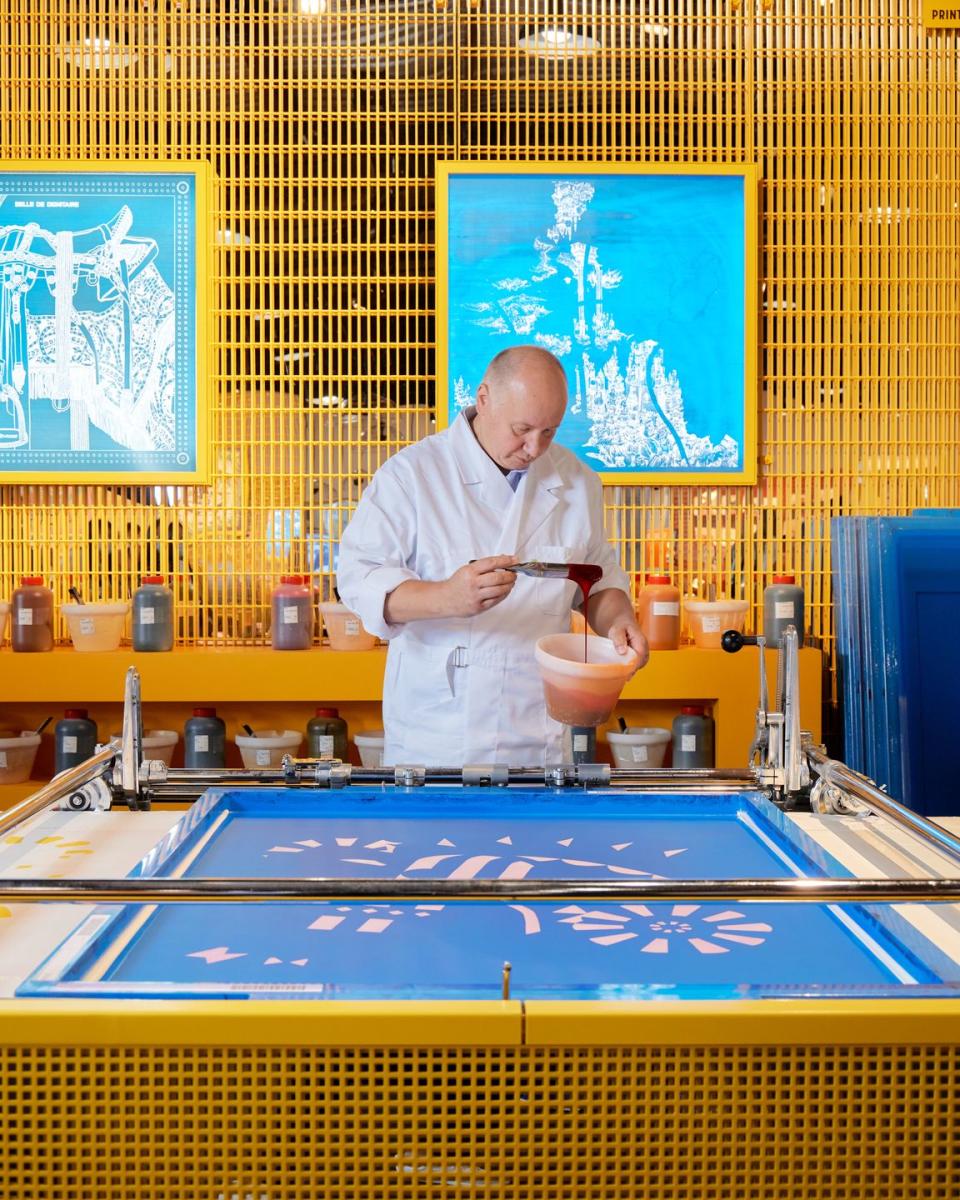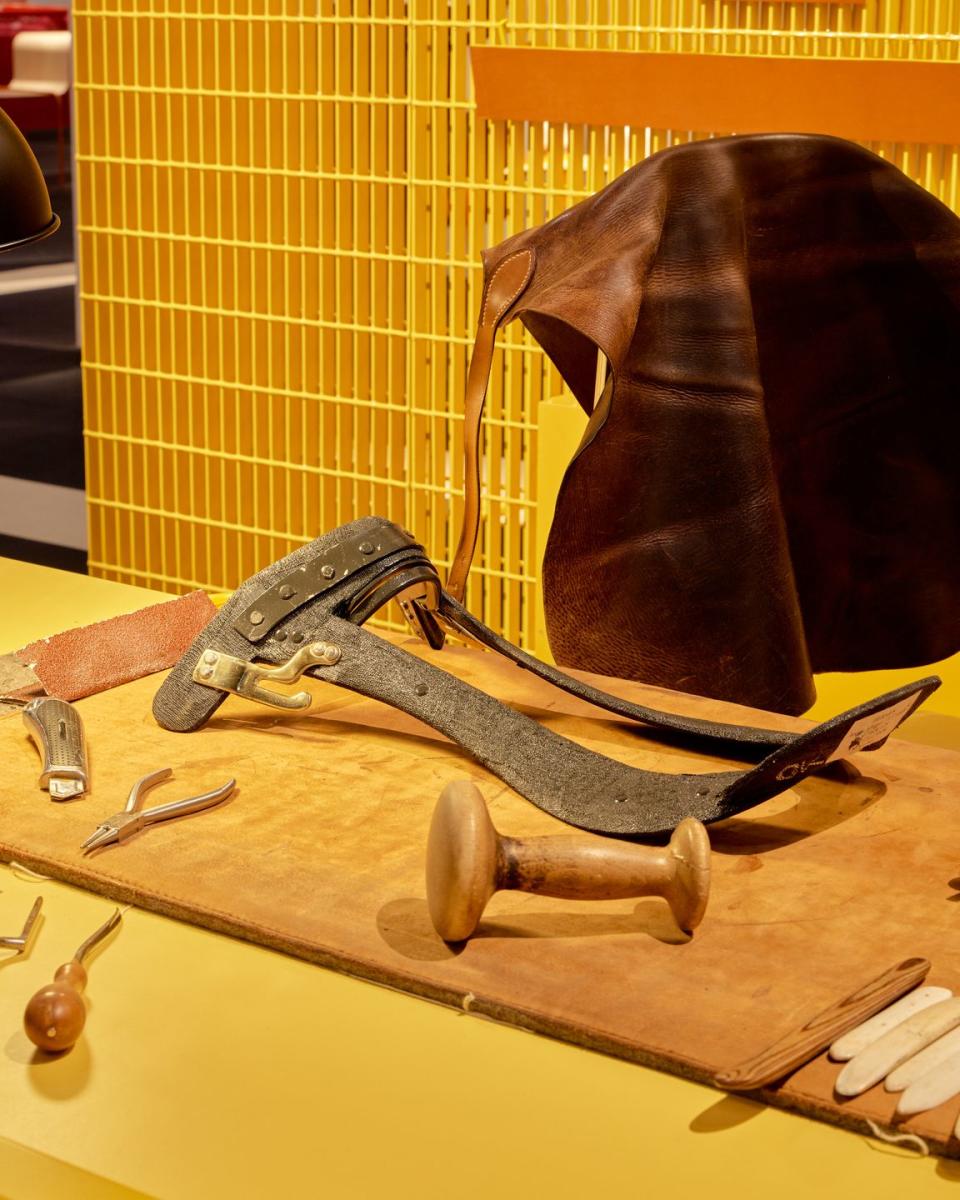The Secret Life of an Hermès Scarf

What does Detroit have in common with Hermès?
It's not a trick question. For one, both have French roots: The Motor City was founded by French colonist Antoine de la Mothe Cadillac in 1701, and Hermès, well, Hermès's Gallic bona fides, which date to 1837, are well established.
The two also share an automobile connection. In the early 1900s, a Detroit company lent Hermès one of its key innovations at the time—the zipper. Émile-Maurice Hermès, grandson of Hermès founder Thierry Hermès, traveled across the United States in 1916, where he fortuitously met Henry Ford, who invited him to tour several Ford automobile factories, where he discovered a zipper on a car roof. Émile-Maurice returned to France with a two-year European patent on the metallic enclosure to be used for suitcases, bags, and jackets. Seven years later, Hermès debuted its first handbag, the sac pour l’auto (car bag), later renamed the Bolide (French for “racing car”) complete with a zipper to hold items in place.
Given these quirks of history, it's no surprise that a year ago Hermès opened a boutique at the Somerset Collection in Troy, Michigan and that the brand staged its ongoing exhibition Hermès in the Making there this past week, showcasing in real time the work and technique behind its signature craftsmanship.

“It's one of the historic important American cities,” said Hermès USA executive vice president of sales and merchandising Diane Mahady. “We think that there's such a terrific local revitalization, and we're very happy to be a part of that and to be participating with the local community.”
Hermès isn’t the only luxury brand courting Detroit, and developers like Dan Gilbert and Nate Forbes have been working in recent years to return the city to its place as a center of innovation, much like it was at the turn of the last century.
Hermès is doing its part by partnering with organizations like the Detroit Achievement Academy, a free public charter school for kindergarten through 8th grade. “When you speak to anyone who works at Hermès, the only thing they ever say is ‘craft, craft, craft,’” said Kyle Smitley, founder and executive director. “And you’re like, 'Oh wait a second, that’s also all we ever say.' It’s an entire dimension of student achievement for us.” At the school, kids—who are well-versed in terms like “upcycling,” “sustainability,” and “repurposing”—make bird savers and laminated butterflies with discarded Hermès silks.

At Hermès in the Making, which ended Wednesday and was free to the public, visitors had the chance to take a close and personal look at the way Hermès craftspeople make saddles, gloves, scarves, bags, jewelry, watches, and porcelain. One artisan normally responsible for silkscreening scarves in Lyon, France took 30 minutes and over a dozen screens to achieve an intricate design featuring three giraffes against a melange of flora. Over in another corner, a leather craftsperson was in the first hour of the three-hour process it takes to shape a handbag handle. And in case you’re wondering how long it takes to make a Birkin by hand — it’s 15 to 20 hours, depending on the material and size of the bag.
“We're very deliberate when we go into a market,” said Mahady. “In a market that's new to us, we like to educate the community on what we stand for.”
What it stands for, largely, is consistency, the kind of quality that all but ensures that today's Kelly enjoys a long shelf life, passed from one generation to the next and becoming along the way tomorrow's family heirloom. That was the takeaway from one of the talks staged at the College for Creative Studies, where Edouard Ambelouis, a New York-based Hermès leather craftsperson, shared stories about repairing 100-year-old handbags.
“They are all difficult because the bag belongs to somebody, the bag has a history, there is a sentimental value,” Ambelouis recalled. “So for us it is all the same.”
You Might Also Like

